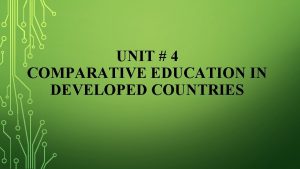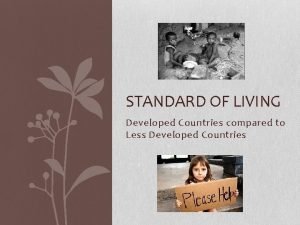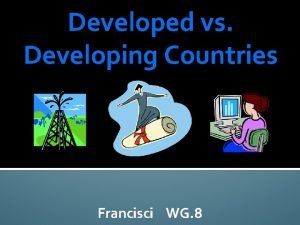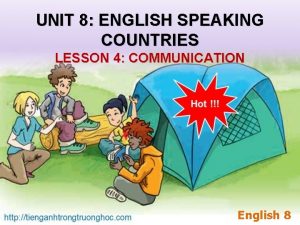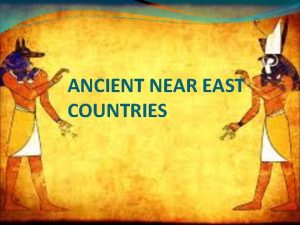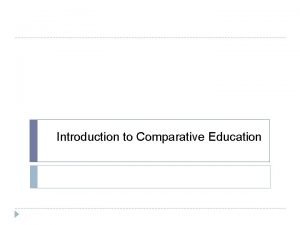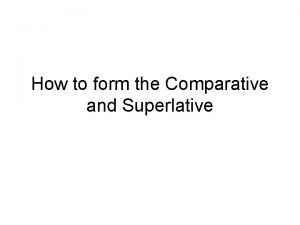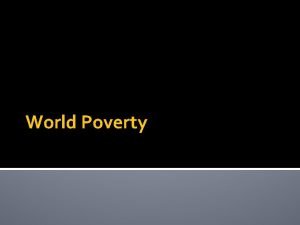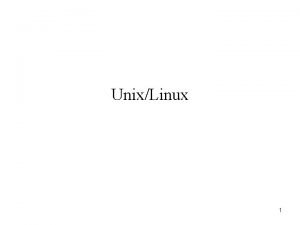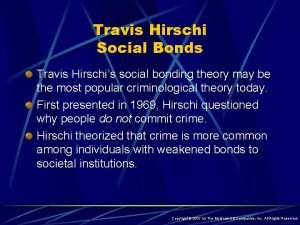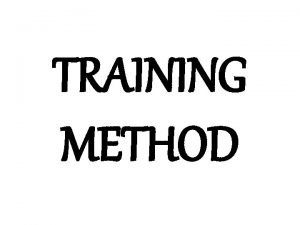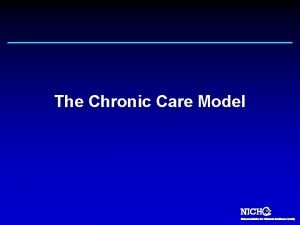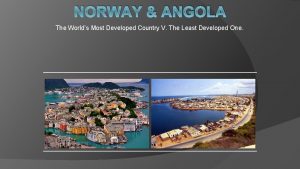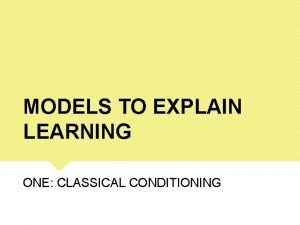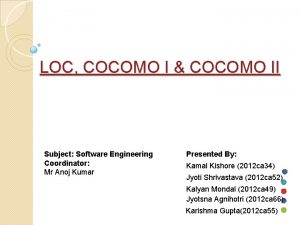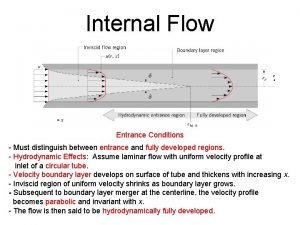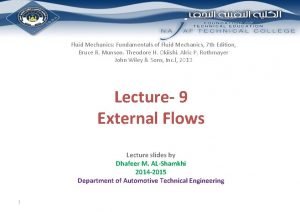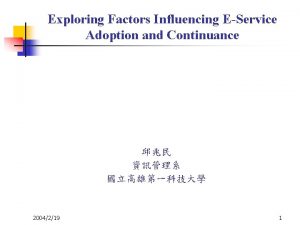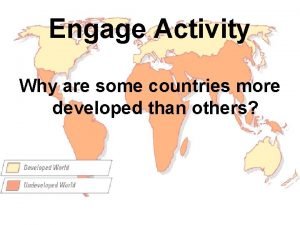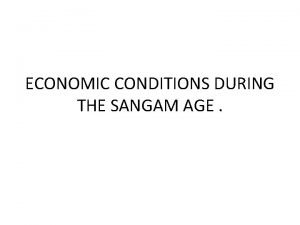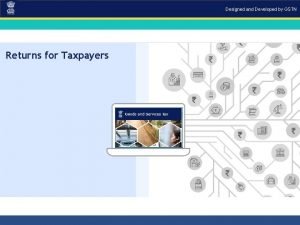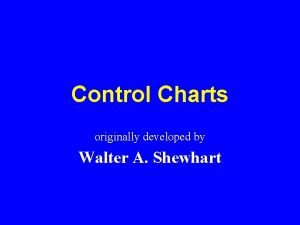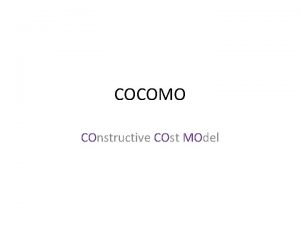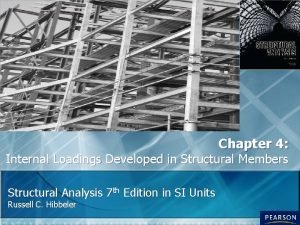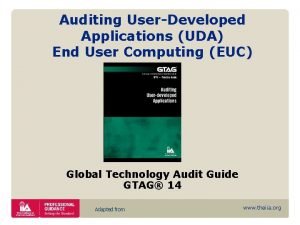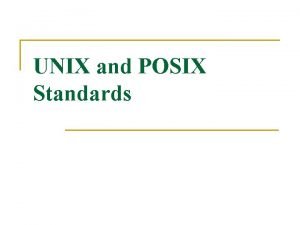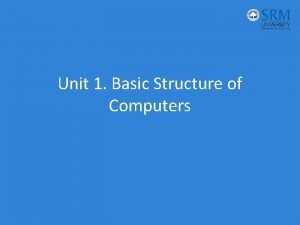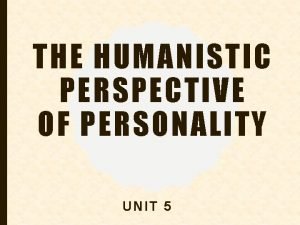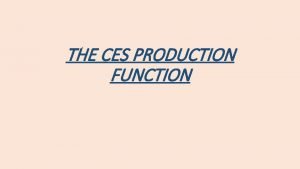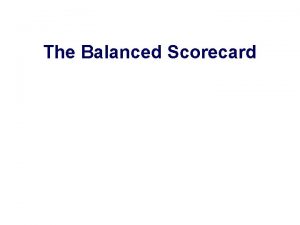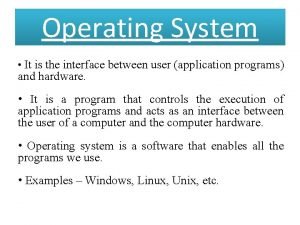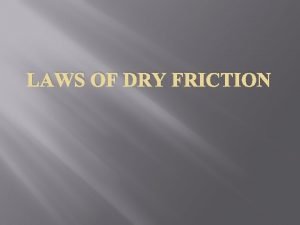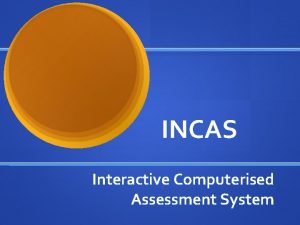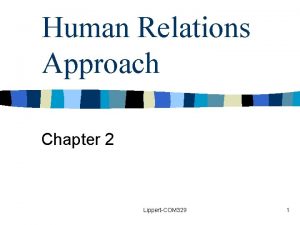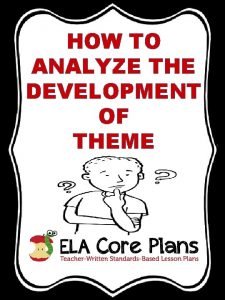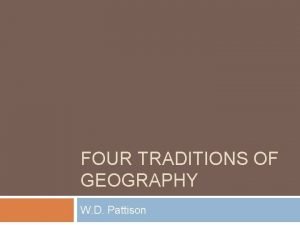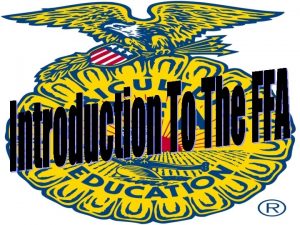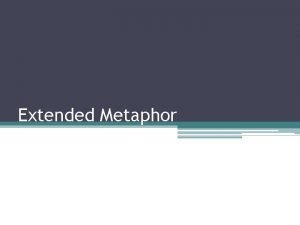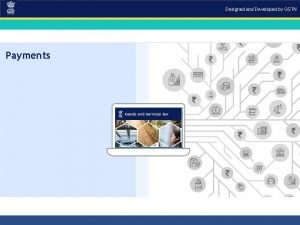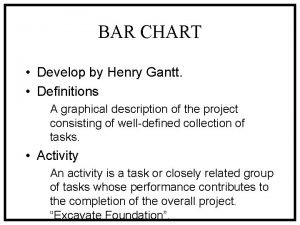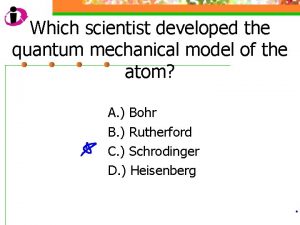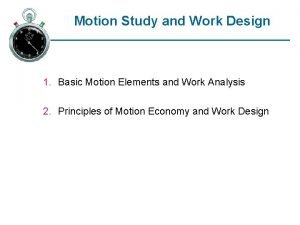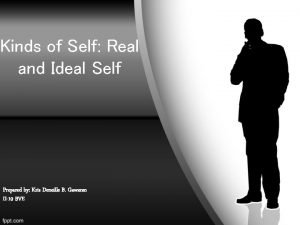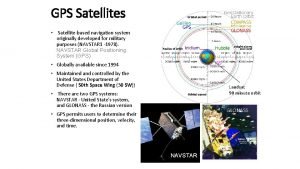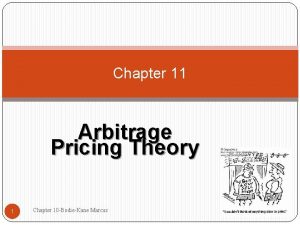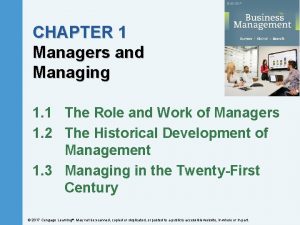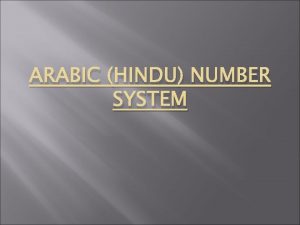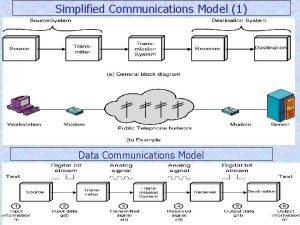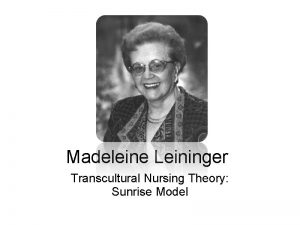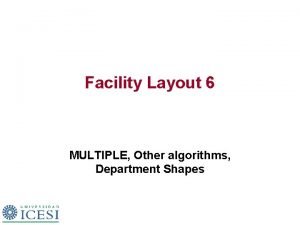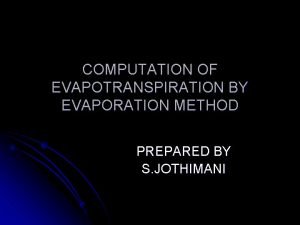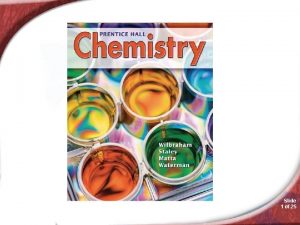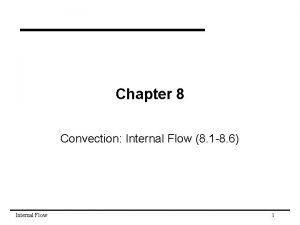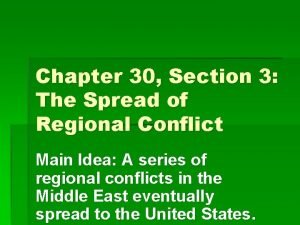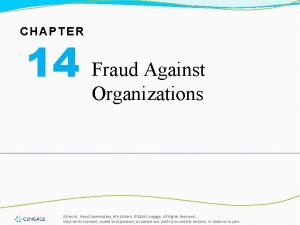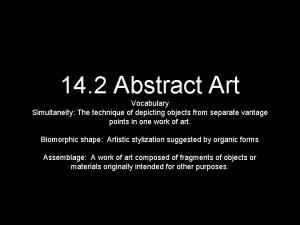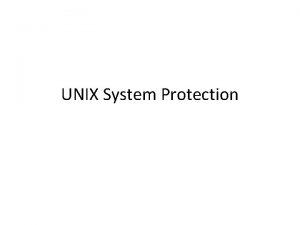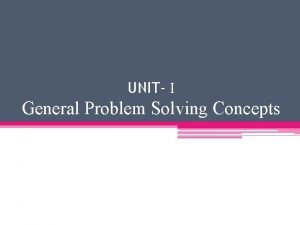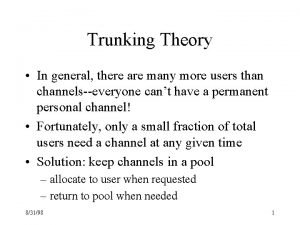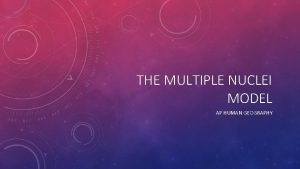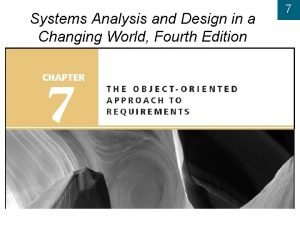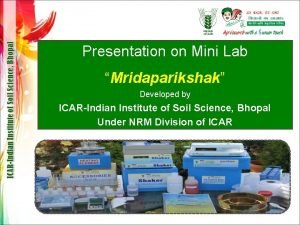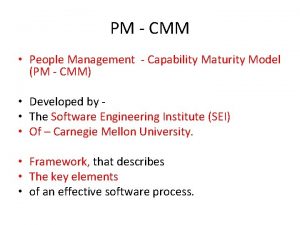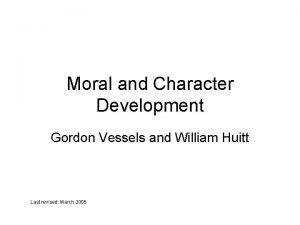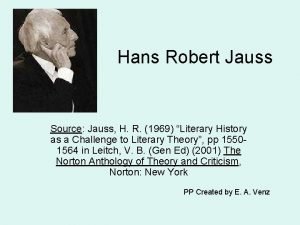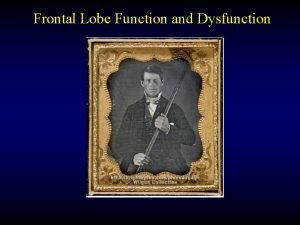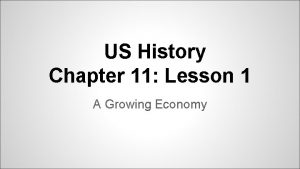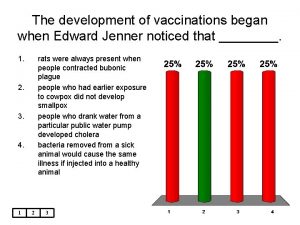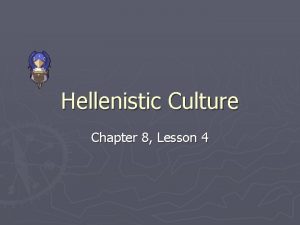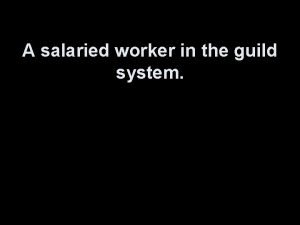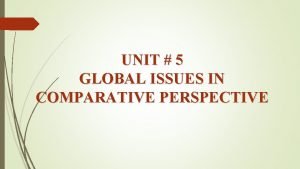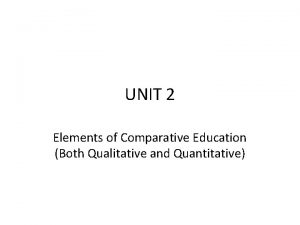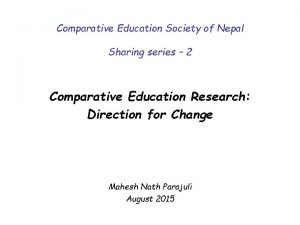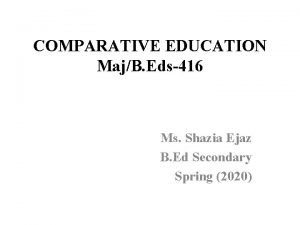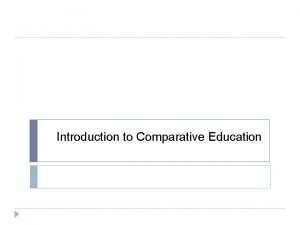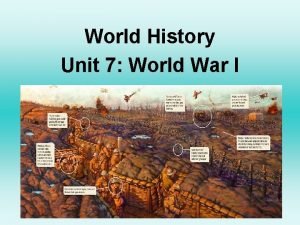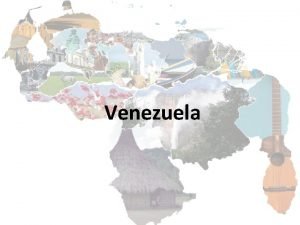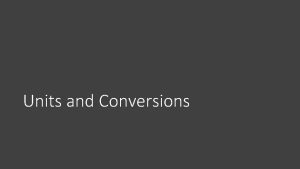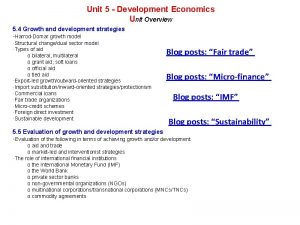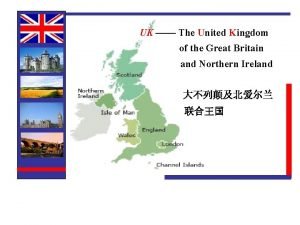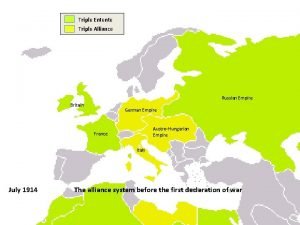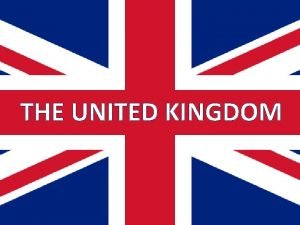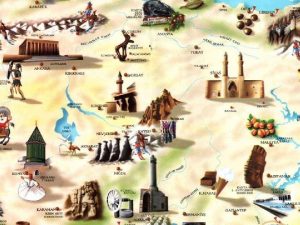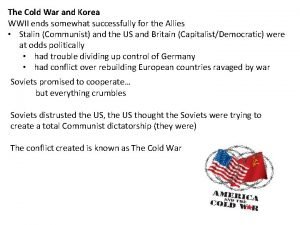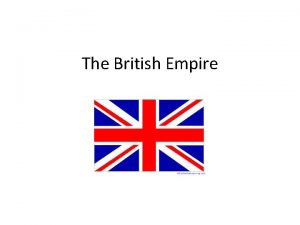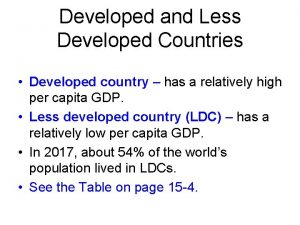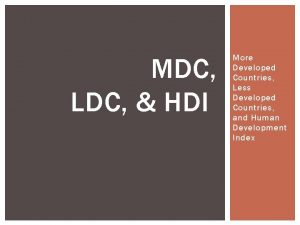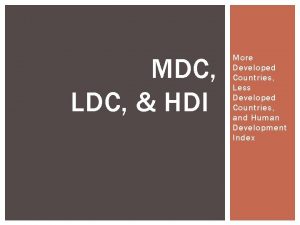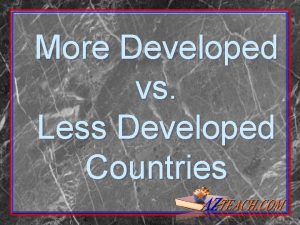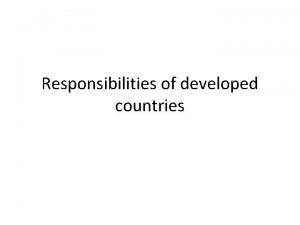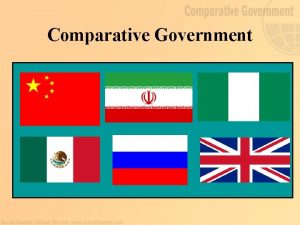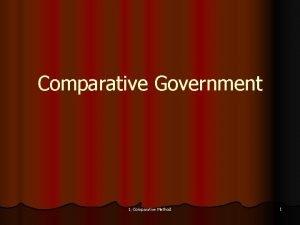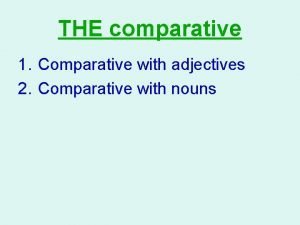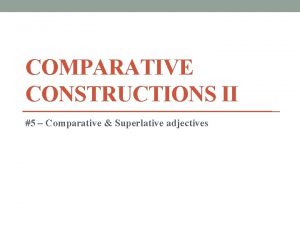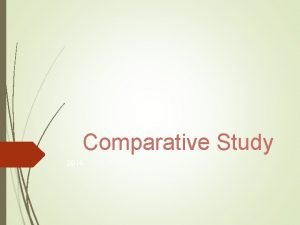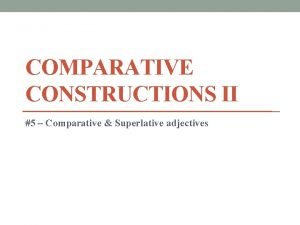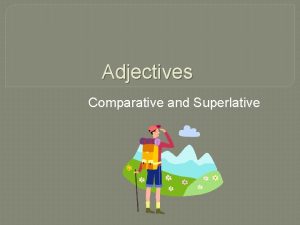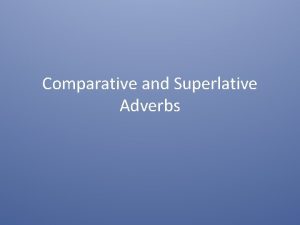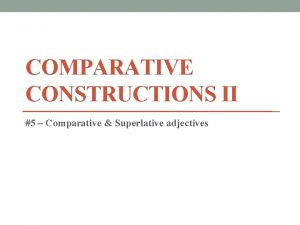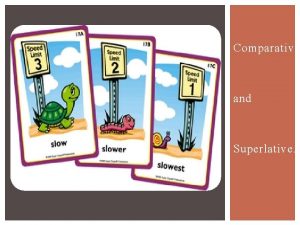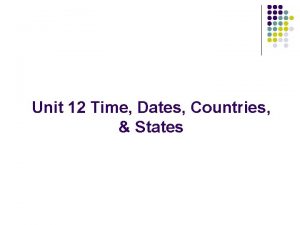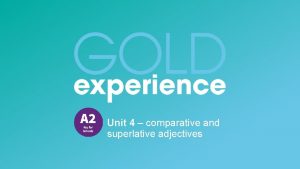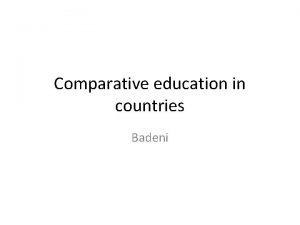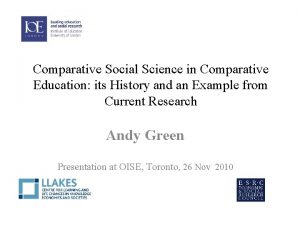UNIT 4 COMPARATIVE EDUCATION IN DEVELOPED COUNTRIES EDUCATION










































































































- Slides: 106

UNIT # 4 COMPARATIVE EDUCATION IN DEVELOPED COUNTRIES

EDUCATION SYSTEM OF USA

• Public / private / home schooling • Public education funded by the local state federal government (85% of all students) • The policies (curricula, funding, teaching methods) are set through locally elected school boards with jurisdiction over school districts • The ages for compulsory education vary by state – from 5 -8 to 14 -18

ELEMENTARY EDUCATION • Admission - based on residency • the curriculum in public elementary education is determined by individual school districts (14, 000 school districts in the country). • In general, a student learns basic arithmetic and sometimes rudimentary algebra in mathematics, English proficiency (such as basic grammar, spelling, and vocabulary), and fundamentals of other subjects (social studies, sciences)

ELEMENTARY EDUCATION • The No Child Left Behind Act of 2001 (NCLB) is a United States Act of Congress – a form of the government's aid program for disadvantaged students. NCLB supports standards-based education reform based on the premise that setting high standards and establishing measurable goals can improve individual outcomes in education. The Act requires states to develop assessments in basic skills. • The Act does not assert a national achievement standard; standards are set by each individual state. NCLB expanded the federal role in public education through annual testing, annual academic progress, report cards, teacher qualifications, and funding changes.

SECONDARY EDUCATION • Junior high school – 7 th, 8 th, 9 th grade – students are given more independence, moving to different classrooms for different subjects, and being allowed to choose some of their class subjects (electives)

SECONDARY EDUCATION • Senior high school – (9 th) 10 th through 12 th grade. – The students in these grades are commonly referred to as freshmen (grade 9), sophomores (grade 10), juniors (grade 11) and seniors (grade 12).

SECONDARY EDUCATION Curriculum: • mandatory subjects (studied for 2, 3 or 4 years): – Science (biology, chemistry and physics) – Mathematics (algebra, geometry, pre-calculus, statistics) – English (literature, humanities, composition, oral languages, etc. ) – Social sciences (history, government/economics courses) – Physical education

SECONDARY EDUCATION Curriculum: • Electives – Computers (word processing, programming, graphic design) – Athletics (cross country, football, baseball, basketball, softball, wrestling, cheerleading, volleyball, lacrosse, ice hockey, field hockey, marching band, etc. ) – Career and Technical Education (Agriculture/Agriscience, Business/Marketing, Family and Consumer Science, Health Occupations, and Technology Education, including Publishing) – Performing Arts/Visual Arts, (choir, band, orchestra, drama, art, ceramics, photography, and dance) – Foreign languages (usually Spanish or French) – Junior Reserve Officers' Training Corps

SECONDARY EDUCATION • Testing – yearly state tests to measure the "adequate yearly progress. " (NCLB Act) – SAT Reasoning Test - (formerly Scholastic Aptitude Test and Scholastic Assessment Test) a standardized test for college admissions in the United States. Introduced in 2005, it takes three hours and forty-five minutes, and costs $49. Possible scores range from 600 to 2400, combining test results from three 800 -point sections (math, critical reading, and writing).

SECONDARY EDUCATION • Testing – The ACT (American College Testing) is a standardized test for high school achievement and college admissions in the United States produced by ACT, Inc. From 1959 a competitor to the SAT Reasoning Test. The ACT test has historically consisted of four tests: English, Math, Reading, and Science reasoning. In 2005, an optional writing test was added to the ACT.

HIGHER EDUCATION • College/university distinction • Private ones – more prestiguous • Tuition – varies from state to state. In 2009, average annual tuition (education costs only) was: • a public university (for residents of the state) - $7, 020 • a public university (for non-residents) - $18, 545 • a private university - $26, 273 + accommodation and board - $7, 000 - $9, 000 – Loans – e. g. The William D. Ford Federal Direct Loan Program - "lowinterest loans for students and parents to help pay for the cost of a student's education after high school. The lender is the U. S. Department of Education. . . rather than a bank or other financial institution. "

HIGHER EDUCATION – Grant and scholarship programs (meritbased and need-based); governmentsponsored and privately-sponsored • community colleges (sometimes called junior colleges, technical colleges, or city colleges) two-year public institutions providing higher education and lower-level tertiary education; they usually offer the associate's degree

HIGHER EDUCATION • Admissions based on: – grades earned in high school, (the students' GPA) – class ranking – standardized test scores (the SAT or the ACT tests). – other, subjective factors: a commitment to extracurricular activities, a personal essay, and an interview.

HIGHER EDUCATION • undergraduate study: – (1 st year) freshman year – (2 nd year) sophomore year – (3 rd year) junior year – (4 th year) senior year bachelor’s degree (eg. BA, BSc) *- major/ minor • graduate study – 2, 3 years master’s degree (eg. MA, MSc) • postgraduate study Doctor of Philosophy (Ph. D. ) or other doctoral degrees

HIGHER EDUCATION • The quality of American universities: – Best: • The Ivy League: – Brown University, – Columbia University, – Cornell University, – Dartmouth College, – Harvard University, – Princeton University, – the University of Pennsylvania – Yale University • Massachusetts Institute of Technology

HIGHER EDUCATION • The quality of American universities: – public universities (state universities) • rely on subsidies from their respective state government but also seek private support; generally charge higher tuition to out-of-state students • „Public Ivies”: the University of Michigan, UCLA, the University of California, Berkeley, the University of Texas at Austin, the University of Virginia, the University of Wisconsin-Madison, the College of William and Mary (Virginia), the University of North Carolina at Chapel Hill,

Some current issues in the US education system: • standardization of curricula • Pros and cons of standardized testing • Racial achievement gap • Violence and drug use • Sex education • Cheating • Affirmative action

EDUCATION SYSTEM OF CHINA

CHINA EDUCATION SYSTEM (OVERVIEW • National education budget: 3. 48% of GDP (2008) • Literacy rate: 92% • • Men: 96% Women: 88% • Compulsory education: 9 years program • Mostly examination-oriented education

CHINA EDUCATION SYSTEM • Kindergarten (optional) • Primary education (6 y) • Junior secondary (3 y) • First 9 -year education is compulsory and in principle for free • Senior / Vocational secondary (3 y) • Higher Education

PRE-SCHOOL EDUCATION can last up to three years, with children entering as early as age three, until age six, when they typically enter elementary school.

PRIMARY EDUCATION • last up to six years, The academic year is divided into two semesters. At the end of each semester, there will be examinations.

JUNIOR SECONDARY • Junior school graduates wishing to continue their education take a locally administered entrance exam, on the basis of which they will have the option either of continuing in an academic upper middle school or of entering a vocational secondary school. • Vocational schools offer programs ranging from two to four years and train medium-level skilled workers, farmers, and managerial and technical personnel. Technical schools typically offer four-years programs to train intermediate technical personnel. “Schools for Skilled Workers” typically train junior middle school graduates for positions requiring production and operation skills. The length of training is typically three year.

Pre-school education + Primary Education Compulsory education: 9 years prog

SENIOR SECONDARY • Also last up to three years, during this time, students have to work really hard to pass the National Higher Education Entrance Examination to enter to Higher Education

HIGHER EDUCATION IN CHINA • • Bachelor degree: usually four years(possibly in other university 5 year) Master degree: usually 2 -3 years, depends on majors and universities Doctor ‘s degree: 2 -4 years Post doctorate: minimum 2 years

NATIONAL HIGHER EDUCATION ENTRANCE EXAMINATION • Very important to Chinese students • Standardized exams inside the province • Usually consists of 4 subjects: (2 days) • • Mathematics Chinese English Optional subject: (Chemistry, Physics, Biology, History, Geography …)

DRAWBACKS • • Too much Homework Lacks Innovation High Pressure Teaching content is distant from real life Exam focused Neglect of certain subjects Class size

EDUCATION SYSTEM OF UK

INTRODUCTION �Education is compulsory between age 5 -16 �But attending school is not compulsory (Home schooling) �The School year runs from September to July (39 weeks) �Most schools require students to wear school uniform

PRIMARY SCHOOL � 5 -11 year olds �One teacher �Close to home

SECONDARY SCHOOL AGE 1116 Comprehensive Grammar �No ability test �Selective �Wide range of education �Academically oriented � 88% of students �One sex �Mixed sex

KEY STAGES Foundation Stage 3 -5 yrs Key Stage One 5 -7 yrs Key Stage Two 7 -11 yrs Basic Education Key Stage Three 1114 yrs Key Stage Four 14 -16 yrs Post Education 11 -16 mandate to 11 -18

TYPES OF SCHOOLS �Community schools �Established and fully funded by Local Authorities �Foundation schools �Funded by local authorities, but are own by the governing bodies or a charitable foundation school �Unpaid schools �Originally established by voluntary bodies, mainly churches. They are now largely funded by local authorities

HOME SCHOOLING �Attending school is not compulsory �The only demand is that every student receives an “efficient full-time education suitable to this age, ability and aptitude, either by regular attendance at school or otherwise �Over 50, 000 students are home schooled each year, and is increasing (17%)

CURRICULUM �CORE SUBJECTS � English � Mathematics � Science �Art �Geography �History �Music �Design and Technology �Information and Communications Technology �Physical Education �Religious Education �Sex and Relationship Education �Citizenship

EXAMINATIONS �SAT � 11+ �GCSE �AS-levels �A-levels

FEE-PAYING SCHOOLS �Public schools �Common Entrance exam �Prep school �Preparation for public school

HIGHER EDUCATION � 30% of the 18 to 19 year olds �Two A-levels �Grade E or above is required

HIGHER EDUCATION �It is provided by three types of institutions: �universities, colleges and institutions education and art and music colleges. of higher �All universities are autonomous institutions and they determine their own admissions policy and requirements. �Non-university level post-secondary studies: �technical/vocational

SCHOOL TERMS AND BREAKS Autumn Term Organization of a school year Summer Term Christmas Holliday (About 2 weeks) Spring Term Summer Holiday (About 6 weeks) Easter Holiday (about 2 weeks)

SCHOOL TIMING School Day School lasts from 9 am until 3. 20 pm Lessons are 1 hour and 15 minutes long. There is a break in the morning at 11. 40 am which lasts 20 minutes. At break time, students usually eat a snack. Lunch is at 1. 15 until 2 pm. Students stay in school and they either bring their own lunch in a lunch box OR they can buy lunch from the school canteen.

TEACHER DEVELOPMENT Course for primary teachers Young Learners Language Development Teacher Development courses for groups

TEACHER DEVELOPMENT Teacher Development Courses for groups Creative Teaching and Trainer Development Creative Teaching and British and culture Courses for Secondary and College CLIL(Content and Language Integrated Learning)

EDUCATION SYSTEM OF JAPAN

PLAYGROUP • Usually starts at 3 • Not compulsory, having only 60% enrollment rate • Play, singing songs, observation, hearing and speaking, handicrafts • Emphasis on being independent and necessary life habits • Teachers considered as developed in understanding children’s world


ELEMENTARY-COMPULSORY FOR CHILDREN AGED 6 -12 -99. 35% public and only. 65% private --enrollment rate is 99% -considered as the first step of the child into society -provide children aged 6 -12 w/ elementary general education suited to the suitable stage of their mental and physical development. -children are not held back if they do poorly and the other way around -parent-teacher communication

Curriculum: • Curriculum- designed and created by the Ministry of Education • Subjects- include Japanese Language, Social Studies, Science, Art, Music, Home Economics, Physical Education • Facilities- buildings are plain but functional. -excellent educational facilities, including libraries, music rooms, art rooms, and playgrounds, swimming pools, Science rooms are similarly well prepared.

*Admin/Staff Teachers- 60% of teachers are women teaches a different grade level each year • in correcting each others behavior • supervise the lives of students outside school • requires license (Bachelor’s Degree 4 yrs, pass • A newly employed unmarried 23 year old teacher with no dependents. • A 40 year old head teacher with husband two children. • A 55 year old principal with a husband no children.

Head Teachers- helps new or weaker teachers improve teaching skills, instruction or classroom supervision assigned in sending weekly/monthly newsletters to parents Principals-98% of Principals are men responsible for all school activities represents the school in PTA and outside groups school symbol and expectation.

Classroom arrangements - 38 -45 Students • Extensive training from the first day of the child’s school career in the routines and rituals that make up the school day • Teachers teaches students that they are responsible for their Behavior • Students are taught to take pride in conducting themselves in an orderly and efficient manner

*School calendar -classes normally start in April and ends in March of the following year • fieldtrips happen in May (Spring) • Annual Sports in September (Autumn) • Three long vacations *Summer break (late July-late August) *Winter break (late December-early January) *Spring break (late Feb-early April) -Graduation in March-less significant

LOWER SECONDARY EDUCATION -Part of the compulsory stage in Japanese Education -Students aged 12 -15 -Purpose is to provide general education corresponding to students’ mental and physical development on the basis of their primary education -Teachers assigned to one subject only(2/3 are men) -Additional subjects like English Language, Moral Education and Religion (Private) -N breaks in between classes(classes 50 mins. Long) -Graduates of lower secondary schools are entitled to advance to schools of upper secondary education colleges (with certificate)

UPPER SECONDARY HIGH SCHOOL • Not compulsory • Students aged 15 -18 • Purpose is to provide higher general education and specialized education according to students’ mental and physical development on the foundation of the lower Secondary education. Three categories: (1) Academic (41 -45) (2) specialized (26 -30), and (3) integrated (over 120) (1)Academic courses provide mainly general education suited to the needs of both those who wish to advance to higher education and those who are going to get a job but have chosen no specific vocational area.

(2) Specialized courses are mainly intended to provide vocational or other specialized education for those students who Ex. agriculture, industry, commerce, fishery, home economics, nursing, science-mathematics, physical education, music, art, English language and other courses. (3) Integrated courses were introduced in 1994. These courses offer a wide variety of subject areas and subjects from both the general and the specialized courses, in order to adequately satisfy students' diverse interests, abilities and aptitudes, future career plans, etc. -encourages self-motivated learning and enables students to experience the joy of learning and a sense of achievement. Study under the integrated course is also seen as a way of helping students to develop their individuality and gain the willingness and ability to approach tasks and issues independently and actively and of fostering the motivation to learn.

HIGHER EDUCATION • Junior College-ages 18 -22 • -must take NAT and the school exam itself • (Ronin) • -81% private universities • -women who wants to pursue courses • Stress home economics, nursing, teaching, humanities and social science Graduate School-ages 22 -24 -only 7% gets Masters Doctorate Level-ages 24 -28 -students take humanities and medical programs -Medical, Veterinary, Dentistry and Pharmaceutical

EDUCATION SYSTEM OF MALAYSIA

ABOUT MALAYSIA Malaysia is wealthy with natural resources in areas such as agriculture, forestry and minerals. In terms of agriculture, Malaysia is one of the top exporters of natural rubber and palm oil, which together with sawn logs and sawn timber, cocoa, pineapple and tobacco dominate the growth of the sector. Palm oil is also a major generator of foreign exchange.

Tin and petroleum are the two main mineral resources that are of major significance in the Malaysian economy. Malaysia was once the world's largest producer of tin until the collapse of the tin market in the early 1980 s. In the 19 th and 20 th centuries, tin played a predominant role in the Malaysian economy. It was only in 1972 that petroleum and natural gas took over from tin as the main stay of the mineral extraction sector.

EDUCA TION Pre-School Attendance in a pre-school programme is not universal and generally only rich families can afford to send their children to private, for- profit pre-schools.

PRIMARY EDUCATION There are two main types of public primary schools in Malaysia: national in Malay and national-type. National-type schools are further divided into Chinese national-type schools and Tamil national-type.

Primary education begins at the age of 7 and ends at 12. Students are promoted to the next year regardless of their academic performance (poor curriculum induced. By degree of government funding, national schools are governmentoperated, while national-type schools are mostly government-assisted, though some are government- operated. Primary education consists of six years of education, referred to as Year 1 to Year 6 (also known as Standard 1 to Standard 6). Year 1 to Year 3 are classified as Level One while Year 4 to Year 6 are considered as Level Two. From 1996 until 2000, the (PTS) or the Level One assessment was administered to. Year 3 students. Excellence in this test allowed students to skip Year 4 and attend. Year 5 instead.

SECONDARY EDUCATION Secondary education in Malaysia is conducted in secondary schools for five years. National secondary schools use Malay as the main medium of instruction. • The only exceptions are the Mathematics and Science subjects as well as languages other than Malay,

MALAYSIAN NATIONAL SECONDARY SCHOOLS ARE SUB-DIVIDED INTO SEVERAL TYPES: 1. 2. 3. 4. 5. 6. National Secondary School Religious Secondary School National-Type Secondary School Technical Schools Residential Schools Junior Science College.

PRE-UNIVERSITY After the SPM, students from public secondary school would have a choice of either studying Form 6 or the matriculation (pre-university). If they are accepted to continue studying in Form 6, they will also take the Malaysian Higher School Certificate examination.

Form 6 consists of two years of study 1. Lower 6 2. Upper 6 • Although it is generally taken by those desiring to attend public universities in Malaysia, it is internationally recognised and may also be used, though rarely required, to enter private local universities for undergraduate courses.

HIGHER EDUCATION Higher Education is heavily supervision by the government. Applicants to public universities must have completed the Malaysia matriculation programme or have an STPM grade. Excellence in these examinations does not guarantee a place in a public university.

The classification of higher education in Malaysia is organised upon the Malaysian Qualifications Framework (MQF) which seeks to set up a unified system of post secondary qualificationsoffered on a national basis both in the vocational as well as higher educational sectors. Students also have the choice of attending private institutions of higher learning. Many of these institutions offer courses in cooperation with a foreign institute or university. Some of them are branch campuses of these foreign institutions.

POSTGRADUATE PROGRAMMES Postgraduate degrees such as the Master of Business Administration (MBA) and the Doctor of Business Administration (DBA) are becoming popular and are offered by both the public universities and the private colleges. All public and most private universities in Malaysia offer Master of Science degrees either through coursework or research and Doctor of Philosophy degrees through research.

VOCATIONAL PROGRAMMES AND POLYTECHNICS SCHOOLS • Besides the university degrees, students also have the option of continuing their education in professional courses such as the courses offered by the ICSA (Institute of Chartered Secretaries and Administrators). Polytechnics in Malaysia provide courses for diploma level (3 years) and certificate level (2 years).

Other types of Schools Islamic religious schools Chinese independent high schools International schools

EDUCATION SYSTEM OF PAKISTAN

WHAT IS EDUCATION ▪ Increase in –Stock of skills –Knowledge –Understanding possessed byindividuals or society ▪ Delivery of knowledge and skills from students teachers to

EDUCATION IN PAKISTAN • Education in Pakistan is overseen by Ministry of Education of government of Pakistan. • The academic institution are the responsibility of provisional government. • Federal government is responsible for curriculum development, accreditation & some finance research.

CONSTITUTION OF PAKISTAN “The State shall remove illiteracy and provide free and compulsory secondary education within minimum possible period”

WHAT I S AN EDUCATION SYSTEM? ▪ Includes –Institutions involved in delivering formal education. –Bodies directly involved in financing, managing, operating or regulating such institutions ▪ Rules and regulations guiding individual and interactions institutional

EDUCATION SYSTEM OF PAKISTAN ▪ Divided into six levels: –Primary –Middle –High –Secondary –Higher secondary –University

STAGES Primary School: (Classes 1 to 5 ) ( age 6 to 11) Upper Primary/Middle School ( Classes 6 to 8) • ( age 11 to 14) Secondary Education (Classes 9 to 10) ( age 14 to 15) Upper Secondary ( Classes 11 to 12) ( age 16 to 17) Higher Education (graduation or Professional Programmes)

ENROLLMENTS 41, 018, 384 1, 535, 461 Teachers Students Meaning 1 25 Teacher Students

LITERACY RATE Chart Title 71 80 69 60 70 60 46. 6 50 27. 4 40 30 20 20. 7 50 45. 3 35. 4 31. 5 30. 2 15. 5 26. 6 10. 3 16. 7 10. 1 10 0 Punjab 1972 Sindh 1981 Khyber-Pakhtunkhwa 1998 2012 Balochistan

L I T E R A C Y RATE ▪ Literacy rate ranges from 96% in Islamabad to 28% in Kohlu District. ▪ 9 crore Pakistanis (49% population) have over English command ▪ On the top of that, Pakistan produces 445, 000 university and 10, 000 computer science graduates.

UNESCO RESEARCH ▪ Even after that Pakistan is on – 136 thposition inworld – 113 thout of 120 registered UN members

WHY I S I T ?

Problems i n Education System ▪ Lack of Proper Planning ▪ Social Constraints ▪ Gender Gap ▪ Cost of Education ▪ Funds for Education ▪ Technical. Education ▪ Lack of Knowledge ▪ Untrained. Teachers

SOLUTIONS ▪ Making technical education compulsory. ▪ Providing students strong monetary grounds. ▪ More funding should be aided by local government. ▪ An effective monitoring system for department. corruption in education ▪ Legislation and structures should be framed for education system. ▪ Career counseling from school level.

▪ Parents should also be consulted towards their children. ▪ Two approaches for learning: – Get education to earn only bread and butter – Get education for self learning and development ▪ Mind set is needed to be changed of one’s who adopt second approach.

CONCLUSION ▪ The reforms required in education will be achieved by unityof –Government of Pakistan –Public and Private Institutions –Formal and non-formal education –Changed thinking local natives –Vocational and technical training

EDUCATION SYSTEM OF INDIA

EDUCATION IN INDIA Education in India is provided by the public sector as well as the private sector, with control and funding coming from three levels: central, state and local. Under various articles of the Indian Constitution, free and compulsory education is provided as a fundamental right to children between the ages of 6 and 14.

Primary School: (Classes 1 to 5 ) ( age 6 to 11) Upper Primary/Middle School ( Classes 6 to 8) ( age 11 to 14) Secondary Education (Classes 9 to 10) ( age 14 to 15) Upper Secondary ( Classes 11 to 12) ( age 16 to 17) Higher Education (graduation or Programmes) Professional

TOTAL NUMBER OF UNIVERSITIES Central Universities 47 State Universities 367 Deemed Universities 123 Private Universities 282 Total Universities 819

AIM, GOAL AND OBJECTIVES To promote national progress A sense of common citizenship and culture To strengthen national integration. To develop skillful, learner formation of character, development of personality high Development of civic and social values Promotion of social efficiency, spread of national culture. Improvement of vocational efficiency.

To promote values such as India’s common cultural heritage, social equality, democracy and secularism Removal of socialbarriers and observance of small family norms. Development of leadership which means training pupils fulfill their duties efficiently. to

CURRICULUM The Indian school system follows the British structure Primary school consists of grades 1 -5 (ages 6 -11) Middle school consists of grades 6 -8 (ages 11 -14) States determine the curriculum used in schools The quality of teaching varies very school to school and State to State

Primary Stage (5 years) curriculum includes: Grades 1 and 2 1. One Language — 2. The regional language 3. Mathematics 4. Art of Healthy and Productive Living Grades 3 to 5 1. One language — the regional language 2. Mathematics 3. Environmental Studies 4. Art of Healthy and Productive Living The

Upper Primary/Middle Stage (3 years) The Grade 6 -8 curriculum includes: 1.

Secondary Stage grades 9 and 10 (2 years) The curriculum includes: 1. Three Languages a. Regional language b. Hindi c. English (Some Schools offer as electives other languages such as Sanskrit, Chinese, Japanese, Russian, French, German, Arabic, Persian, Spanish)

2. Mathematics 3. Science and Technology 4. Social Sciences 5. Work Education or Pre-Vocational Education 6. Art Education (fine arts: Visual and Performing) 7. Physical and Health Education

Upper Secondary Education The curriculum includes: The majorityof studentsexit school after grade 10( age 15) Science (mathematics, physics, and chemistry, Biology) Commerce (economics, accounting, mathematics, and commerce) Humanities (arts) (history, geography, political science, philosophy, psychology, languages, arts, music)

EDUCATION BOARDS IN INDIA CBSE: Central Board of Secondary Education CISCE: Council for the Indian School Certificate Examination NOS: National Open School SSC: State School Board

TEACHER TRAINING Nursery level Teacher: A Diploma course of Nursery Teacher Training (NTT) High School Teacher: B. Ed Physical Education Teacher: Post-Graduate in Physical Education (M. P. Ed. ) from a recognized University/Institute University level Teaching: National Eligibility Test (NET)

MINIMUM STAFF QUALIFICATIONS Primary. School Teacher (Classes 1– 5) Higher Secondary with JBT (Two years) Secondary School teacher a. At least Bachelors Degree from a recognized University b. B. Ed. from a recognized University/Institute

Higher Secondary School Teacher (Classes 11 and 12) post graduate qualifications with specialization in branch of the subjectwith graduation in the subject concerned Heads of Schools/ Principal a. Masters or Honors. Degree Masters Degree equivalent to b. At least 5 years’ experience of administrative charge the a

CHALLENGES FACED No practical knowledge: a. Lots of attention is given to theory and books and practical knowledge is completely ignored b. In India, parents and teachers expect their students to score high in the exam (rather than acquiring the quality knowledge) and thus the education becomes a rat race.
 Unit 4 school education system
Unit 4 school education system Mdc/ldc
Mdc/ldc Less developed countries
Less developed countries Developing nation definition
Developing nation definition Warm english speaking countries
Warm english speaking countries Primitive period of physical education
Primitive period of physical education Near east countries
Near east countries Unit 6 review questions
Unit 6 review questions What is comparative education
What is comparative education Form comparative
Form comparative Causal-comparative/quasi-experimental
Causal-comparative/quasi-experimental Developed country
Developed country Abrasive water jet machining advantages and disadvantages
Abrasive water jet machining advantages and disadvantages Unix was originally developed in
Unix was originally developed in Developed by travis hirschi *
Developed by travis hirschi * Disadvantages of circuit training
Disadvantages of circuit training Electric force
Electric force Developed by ed
Developed by ed Developed country
Developed country Unconditioned vs conditioned stimulus
Unconditioned vs conditioned stimulus Cocomo i
Cocomo i Fully developed flow
Fully developed flow Linguagem de radio px
Linguagem de radio px Fundamentals of fluid mechanics
Fundamentals of fluid mechanics The expectancy model is developed by -
The expectancy model is developed by - Least developed country
Least developed country Agriculture in sangam age
Agriculture in sangam age Ideal self vs true self
Ideal self vs true self Designed & developed by gstn
Designed & developed by gstn Who invented control charts
Who invented control charts Cocomo kloc
Cocomo kloc The internal loading can be found by
The internal loading can be found by Uda user developed application
Uda user developed application Posix
Posix Basic structure of computer
Basic structure of computer Joseph luft and harry ingham
Joseph luft and harry ingham Humanistic perspective on personality
Humanistic perspective on personality Ces production function is developed by
Ces production function is developed by Balanced scorecard of starbucks
Balanced scorecard of starbucks Which operating system is a multiuser os developed in 1969
Which operating system is a multiuser os developed in 1969 Anne boykin
Anne boykin Abraham maslow background
Abraham maslow background State the laws of dry friction
State the laws of dry friction Incas testing
Incas testing Abraham maslow developed his hierarchy of needs
Abraham maslow developed his hierarchy of needs How is theme developed
How is theme developed Spatial tradition
Spatial tradition National vocational act
National vocational act Definition extended metaphor
Definition extended metaphor Designed & developed by gstn
Designed & developed by gstn Bar chart construction
Bar chart construction Which scientist developed the quantum mechanical
Which scientist developed the quantum mechanical Motion economy
Motion economy Ideal self vs real self
Ideal self vs real self Greatest contributors to our present gymnastics program
Greatest contributors to our present gymnastics program Why was the gps network originally developed
Why was the gps network originally developed Communication format
Communication format The arbitrage pricing theory was developed by
The arbitrage pricing theory was developed by A carefully developed overall approach to leading
A carefully developed overall approach to leading Who developed the assure model
Who developed the assure model Hindu numbers
Hindu numbers Well developed paragraph format
Well developed paragraph format Brigade system
Brigade system Summary of the gift of the magi
Summary of the gift of the magi Model of data communication
Model of data communication Leininger modeli
Leininger modeli Multi floor plant layout evaluation
Multi floor plant layout evaluation Piche evaporimeter diagram
Piche evaporimeter diagram Alchemists developed processes for separating
Alchemists developed processes for separating Internal flow examples
Internal flow examples Is cyprus a developed country
Is cyprus a developed country Register disbursement scheme
Register disbursement scheme Who developed cubism
Who developed cubism Why unix was developed
Why unix was developed Difficulties in problem solving
Difficulties in problem solving Trunking theory
Trunking theory Power point has been developed by
Power point has been developed by Range definition ap human geography
Range definition ap human geography Fully developed use case description
Fully developed use case description Mridaparikshak developed by icar
Mridaparikshak developed by icar Key practice areas of pm cmm
Key practice areas of pm cmm Moral and character development examples
Moral and character development examples Hans robert jauss developed
Hans robert jauss developed Frontal lobe
Frontal lobe Corporations developed rapidly in the 1830s
Corporations developed rapidly in the 1830s Directions for producing mhcs come from
Directions for producing mhcs come from Lesson 4 hellenistic culture
Lesson 4 hellenistic culture What is the fbla pledge
What is the fbla pledge What big data open source software was developed
What big data open source software was developed A vassal owed his first loyalty to his
A vassal owed his first loyalty to his Llb
Llb Define the concept of comparative education
Define the concept of comparative education Comparative education
Comparative education Scope of comparative education slideshare
Scope of comparative education slideshare Comparative education definition
Comparative education definition Neutral countries in ww1
Neutral countries in ww1 Ww2 alliances
Ww2 alliances Colombia neighbors
Colombia neighbors Countries that use imperial units
Countries that use imperial units National development
National development What countries make up the uk
What countries make up the uk Triple entente triple alliance
Triple entente triple alliance United kingdom 5 countries
United kingdom 5 countries The seven continents
The seven continents Why are some countries poorer than others
Why are some countries poorer than others Cold war countries
Cold war countries What countries were in the british empire
What countries were in the british empire
